GESTALT PSYCHOLOGY
The organization of small units into the perception of a form or whole object.
There are laws or rules that govern how we see and perceive visual imagery. To be aware of these natural tendencies and to make use of this knowledge, will help you to better communicate and express your ideas.
1. Laws of Organization
Simplicity: Every stimulus pattern is seen in such a way that the resulting structure is as simple as possible

similarity: Similar things appear to be grouped together
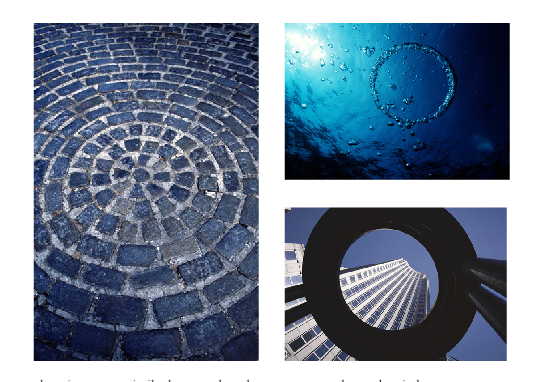



proximity: Things that are near to each other tend to be grouped together
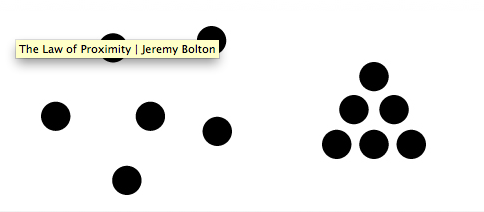

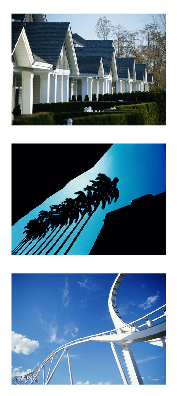
closure: Points that when connected, result in straight or smoothly curving lines are seen as belonging together, and lines tend to be seen in such a way as to follow the smoothest path.

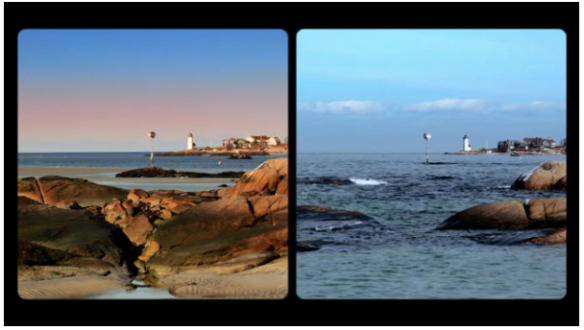
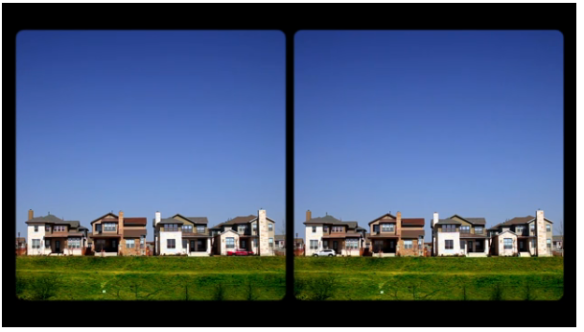
2. Figure / Ground Relationship
Figure-ground Relationship (also called positive and negative space) is used in two and three diminsional design. In its basic sense, it refers to a cognitive ability to separate elements based upon contrast, that is, dark and light, black and white, contrasting colors and "there" and "not there." In figure/ground relationships the absence or void is as important as the filled-in or occupied areas in the composition.
More often, we simply talk about positive and negative space. An artwork has areas where something IS and areas where something ISN'T. The boundary or edge between those spaces creates a shape and that shape creates the art. In art the blank, empty areas have as much weight and importance as the areas with something in them. In silouettes, for instance, the background defines the space that you see as a positive area. In artwork that emphasizes figure/ground relationship the shapes and lines that outline and define the background are important compositional elements and lead you around the artwork and to the focal point.
SHAPE is an area that is separate from other areas and/or its background. GEOMETRIC SHAPES are those made with straight lines and circles– manmade shapes that can be drawn with a ruler or compass. ORGANIC SHAPES are those found in nature that have a more spontaneous hand-drawn feel to them.
FIGURE or “positive shape” is the part of a composition that we focus on. The FIGURE is easy to identify when it is a recognizable object “subject matter”. When shapes are more
abstract, we determine what the FIGURE is based on its relationship to other visual elements. GROUND or “negative shape” is everything that is not the FIGURE.
The FIGURE/GROUND RELATIONSHIP refers to humans’ ability to separate elements based upon contrast. The FIGURE always defines the GROUND and the GROUND defines the FIGURE. They are inseparable — you cannot have one without the other. If you draw the FIGURE in a composition, you are drawing the GROUND at the same time. The edges of one are the edges of the other.
BALANCE: Our tendency to perceive FIGURE/GROUND relationships is exploited in this vase / two faces example where the negative and positive space is balanced. One can view the image as either a central white vase or two profiles facing each other. When we focus on the vase, as FIGURE the black becomes the GROUND and vice versa. To see both of these perceptions, it requires switching the FIGURE / GROUND back and forth.
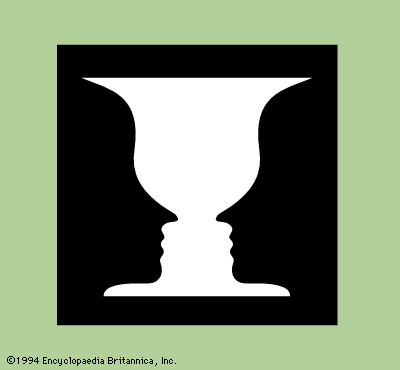



3. The Rule of Thirds:
See "some compositional rules of photography" page for info on this....